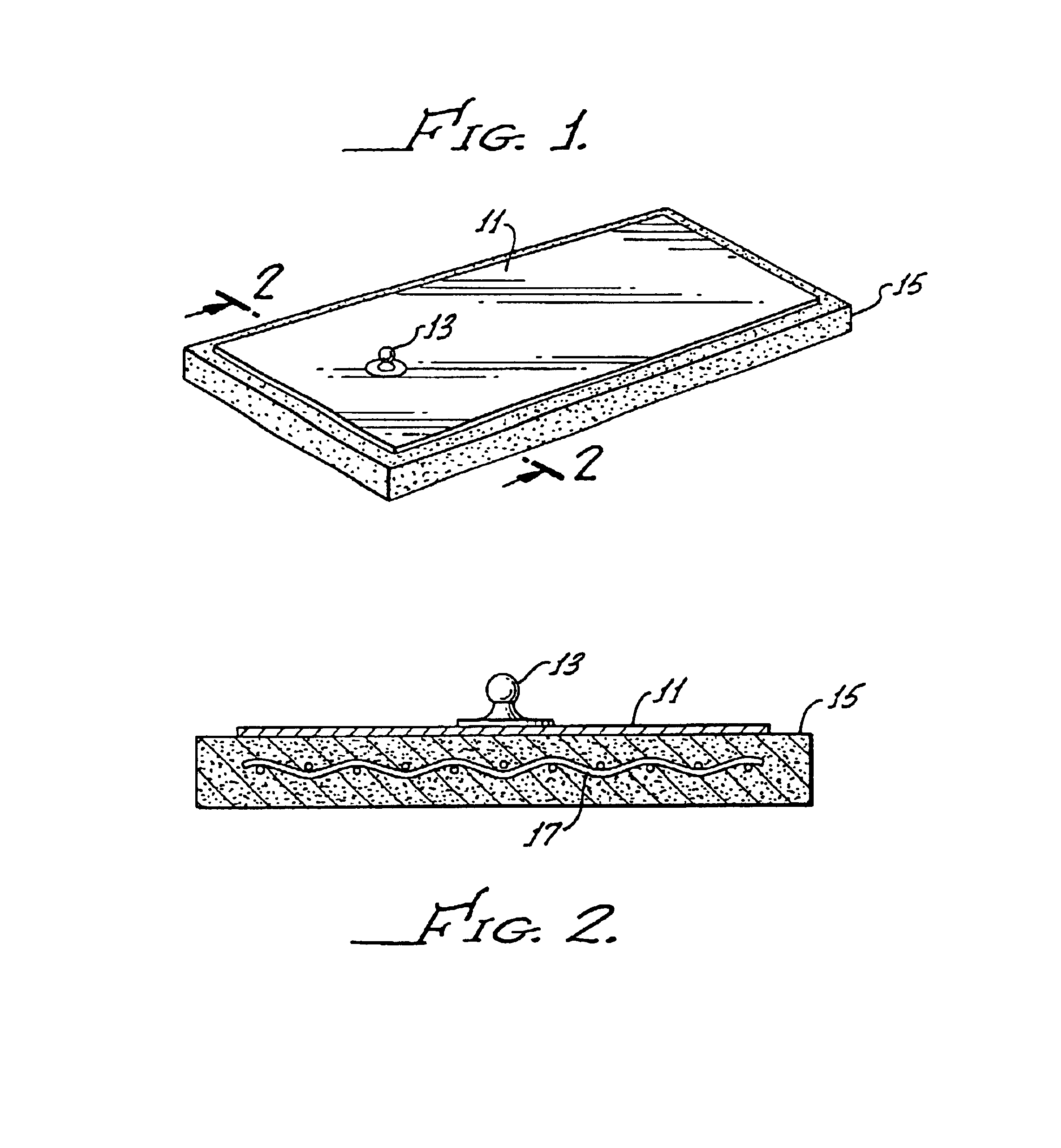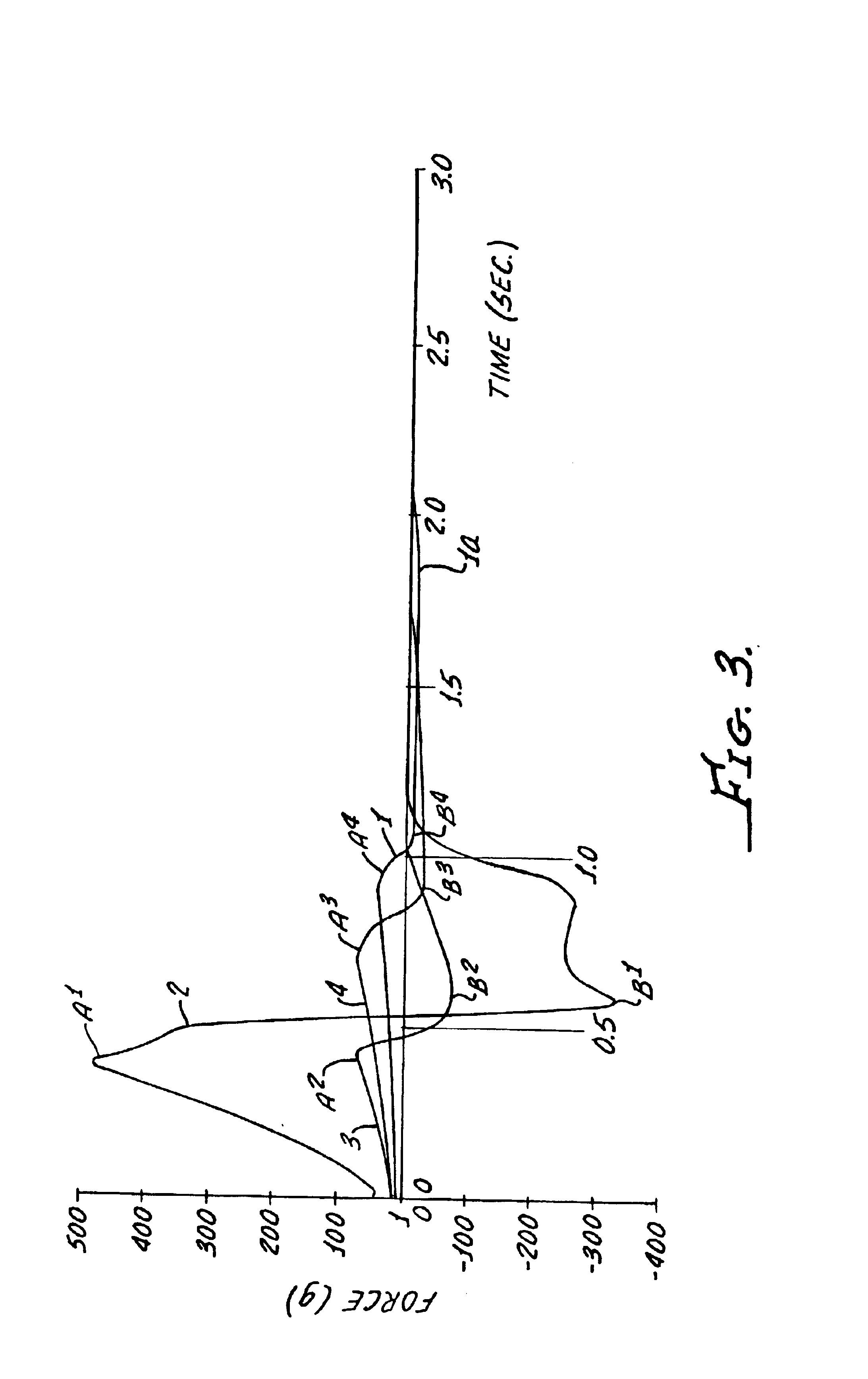Medical electrode
a technology of conjugation electrodes and electrodes, which is applied in the field of conjugation electrodes, can solve the problems of inability to achieve homopolymerization of vinyl ether in the presence of water, inability to maintain constant structure, and inability to efficiently and effectively electrical transmission,
- Summary
- Abstract
- Description
- Claims
- Application Information
AI Technical Summary
Benefits of technology
Problems solved by technology
Method used
Image
Examples
example i
Acrylic acid and glycol vinyl ethers copolymerize via a charge transfer complex wherein the vinyl ether acts as an electron donor and the acrylic acid acts as an electron acceptor. This reaction occurs in a matter of minutes if just these two materials are mixed together generating very low molecular weight species; however, high molecular weight species (>10,000) can be created with a free radical initiator. Molecular weights should be greater than about 100,000 daltons to be adhesive and leggy and less than about 5,000,000 daltons, as a higher molecular weight may be too firm at the level of crosslinking preferred. Mixing and curing of the ingredients, utilized in the below examples, must be done quickly to avoid the generation of a significant concentration of aldehydes from the acid hydrolysis of the vinyl ether by the acrylic acid and to avoid generation of low molecular species by autopolymerization.
The following formulation is utilized as a conductive substrate. This formulat...
example ii
The compositions designated 23-38A in Table I, above, was tested for biocompatibility in the following tests:
An in vitro biocompatibility study, based on the United States Pharmacopeia (USP) guidelines, was conducted on a test article, i.e. Composition 23-38, to determine the potential for cytotoxicity. A 1.0 cm2 portion of the test article, the negative control, and the positive control were each placed on duplicate agarose surfaces directly overlaying confluent monolayers of L-929 mouse fibroblast cells. After incubating at 37° C. in 5% CO2 for 24-26 hours, the cell cultures were examined macroscopically for cell decolorization around the test article and controls to determine the zone of cell lysis (if any). The cultures were then examined microscopically (100×) to verify any decolorized zones and to determine cell morphology in proximity to and beneath the test and control articles.
Under the conditions of this study, the test article showed no evidence of causing cell lysis or t...
PUM
| Property | Measurement | Unit |
|---|---|---|
| current densities | aaaaa | aaaaa |
| thickness | aaaaa | aaaaa |
| molecular weight | aaaaa | aaaaa |
Abstract
Description
Claims
Application Information
 Login to View More
Login to View More - R&D
- Intellectual Property
- Life Sciences
- Materials
- Tech Scout
- Unparalleled Data Quality
- Higher Quality Content
- 60% Fewer Hallucinations
Browse by: Latest US Patents, China's latest patents, Technical Efficacy Thesaurus, Application Domain, Technology Topic, Popular Technical Reports.
© 2025 PatSnap. All rights reserved.Legal|Privacy policy|Modern Slavery Act Transparency Statement|Sitemap|About US| Contact US: help@patsnap.com



